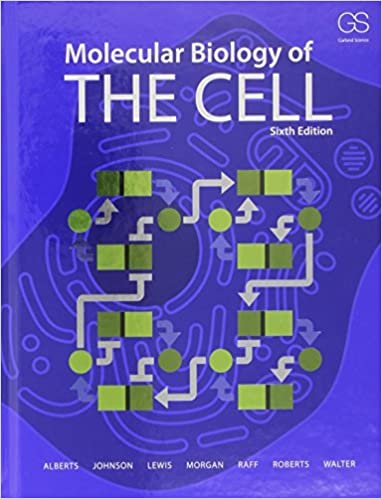
Molecular Biology Of The Cell 6th Edition by Bruce Alberts, Alexander Johnson, Julian Lewis, David Morgan, Martin Raff, Keith Roberts, Peter Walter
Edition 6ISBN: 978-0815345244
Molecular Biology Of The Cell 6th Edition by Bruce Alberts, Alexander Johnson, Julian Lewis, David Morgan, Martin Raff, Keith Roberts, Peter Walter
Edition 6ISBN: 978-0815345244 Exercise 11
For many years it was a complete mystery how cytotoxic T cells could see a viral protein that seemed to be present only in the nucleus of the virus-infected cell. The answer was revealed in a classic paper that took advan- tage of a clone of T cells whose T cell receptor was directed against an antigen assoicated with the nuclear protein of the 1968 strain of influenza virus. The authors of the paper found that when they incubated high concentrations of certain peptides derived from the viral nuclear protein, the cells became sensitive to lysis by subsequent incubation with the cytotoxic T cells. Using various peptides from the 1968 strain and the 1934 strain (with which the cytotoxic T cells did not react), the authors defined the particular pep- tide responsible for the T cell response (Figure Q24-1).
A. If homozygous d-type mice were bred to homozy- gous k-type mice to generate d-type/k-type heterozygous progeny, would you expect that cytotoxic T cells from these heterozygotes, when infected with LCMV, to be able to lyse infected d-type cells? How about infected k-type cells? Explain your answers.
B. Oddly enough, LCMV infection does not kill mice that lack a thymus-such as "nude" mice, so called because they also lack hair. If a thymus is transplanted back into a nude mouse, it will die when infected with LCMV. Suppose that a d-type/k-type heterozygous nude mouse was given a thymus from an d-type donor. Would you expect its cyto- toxic T cells to be able to lyse infected d-type cells? How about infected k-type cells? Explain your answers.
A. If homozygous d-type mice were bred to homozy- gous k-type mice to generate d-type/k-type heterozygous progeny, would you expect that cytotoxic T cells from these heterozygotes, when infected with LCMV, to be able to lyse infected d-type cells? How about infected k-type cells? Explain your answers.
B. Oddly enough, LCMV infection does not kill mice that lack a thymus-such as "nude" mice, so called because they also lack hair. If a thymus is transplanted back into a nude mouse, it will die when infected with LCMV. Suppose that a d-type/k-type heterozygous nude mouse was given a thymus from an d-type donor. Would you expect its cyto- toxic T cells to be able to lyse infected d-type cells? How about infected k-type cells? Explain your answers.

Explanation
The T-cells (thymocytes) begin as the im...
Molecular Biology Of The Cell 6th Edition by Bruce Alberts, Alexander Johnson, Julian Lewis, David Morgan, Martin Raff, Keith Roberts, Peter Walter
Why don’t you like this exercise?
Other Minimum 8 character and maximum 255 character
Character 255


